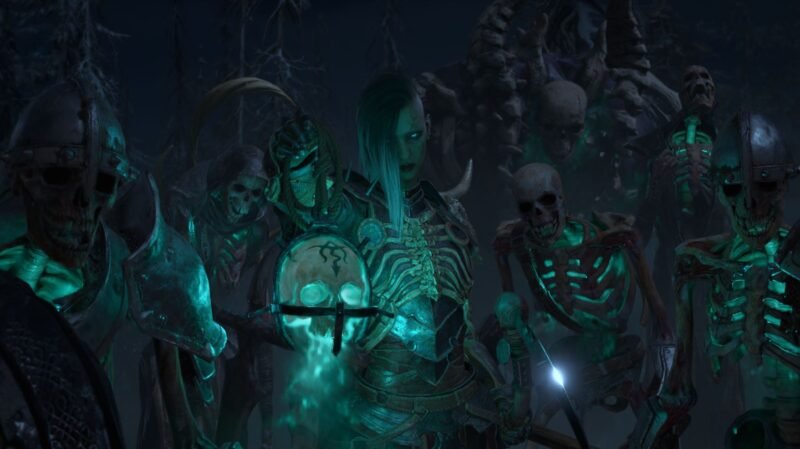
In the third Diablo IV quarterly update of 2022, Blizzard detailed how post-launch support and monetization will work in the fantasy RPG. The biggest takeaways are that all microtransactions will be cosmetic only and that the game will build upon the seasonal post-launch formula established in Diablo III.
Diablo III’s auction house became quite infamous, so Blizzard is clarifying that microtransactions in Diablo IV are cosmetic only before release. Diablo IV will have The Shop, where players can spend premium currency to buy class-specific cosmetic items and bundles that interest them. These cosmetics don’t have any gameplay benefits on their own, so players must transmog from other weapons and armor in Diablo IV. Players will also earn cosmetics through the Season Pass, which will include free and premium tiers each season.
Outside of cosmetics, the Season Pass will also reward players with Premium Currency to spend in The Shop and Season Boosts that can increase the rate players get XP during a season. That said, Season Boosts will always be on the free tier and not unlocked so players can’t pay to win. Clearly, players will have a lot to work toward each season, and seasons will all feel very independent from each other. At the end of a season, characters are moved to the Eternal Realm, so players will have to start over with a new character to experience the next season’s questline, new gameplay features, Live Events, and Season Journey objectives that can grant Season Pass progression.
Diablo IV isn’t the only Blizzard game that needed to grapple with its live service structure, as Overwatch 2′s team recently made the decision to go free-to-play as it needed to get out the door soon and continue to stay relevant in the very competitive multiplayer landscape. There are actually some intriguing similarities between the two games’ seasonal structures, making it very clear that Blizzard wants these games to be living titles going forward.
Diablo IV will release for PC, PS4, PS5, Xbox One, and Xbox Series X in 2023.
Editors’ Recommendations








